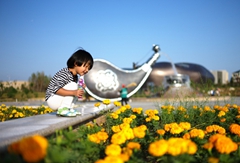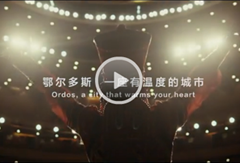Folk musical heritage treasures cherished
Updated: 2017-09-12 (chinadaily.com.cn)  Print
Print 


In a gala of local folk music, dance and opera held in Inner Mongolia in 1955, a 75-year-old performer of Manhan folk songs won the top prize.
Manhan folk songs were performed in the Great Hall of the People in Beijing in 1964 and some State leaders including Mao Zedong watched the performance.
The traditional musical form has experienced rapid development since China’s reform and opening-up in the late 1970s. Almost every county and town in Jungar Banner has a team of Manhan folk song performers.
The traditional music, which is frequently played at local weddings, is also performed on many formal occasions, Ordos officials said.
Jungar Banner was named the home of Manhan folk songs by the Ministry of Culture in 1996. The Manhan folk songs were also listed as a national-level intangible culture heritage item by the central government in 2008.
Different from Manhan folk songs, which are the songs of the people,Guru Songs, another Mongolian art form, originated as a type of court music.
Guru, in Mongolian, means court. Thus Guru Songs were mostly performed at court banquets and other formal occasions in olden days.
Currently some 70 to 80 such songs are preserved in Hanggin Banner, Ordos, although there are few people who can now sing the Guru Songs. Because of the rarity with which they are sung, the songs are considered to be a living fossil of Mongolian people's music.





 Ordos Impression
Ordos Impression Ordos WeChat
Ordos WeChat Ordos Reported
Ordos Reported


